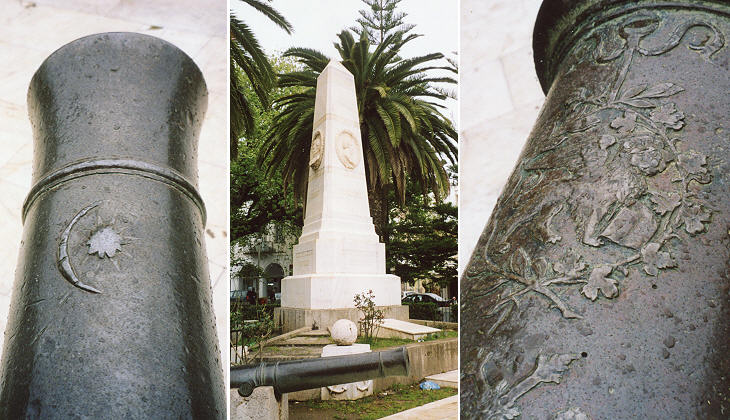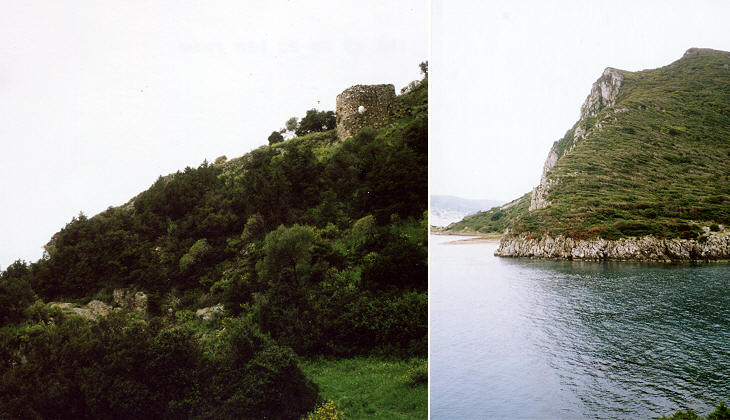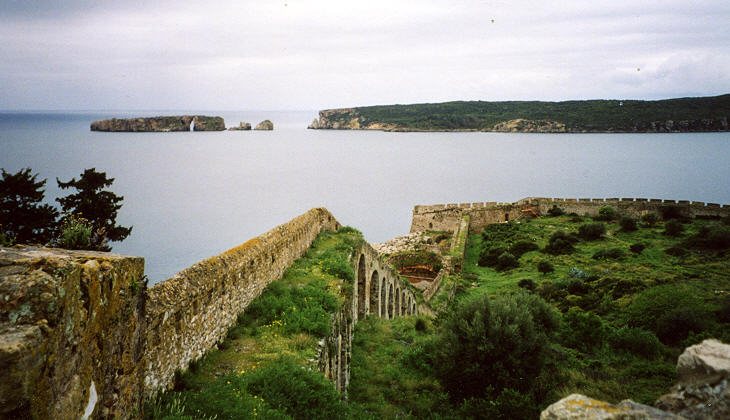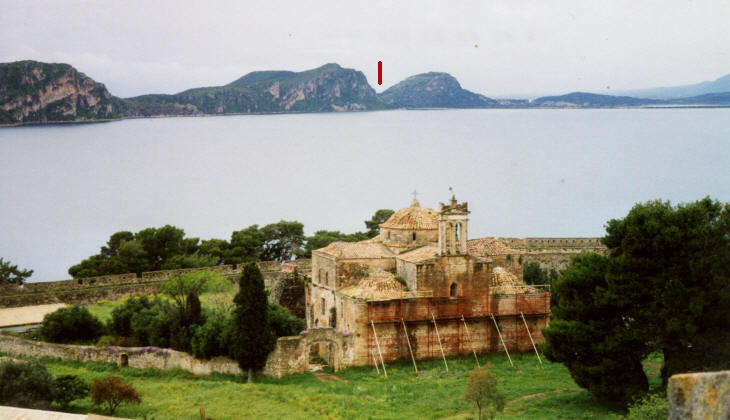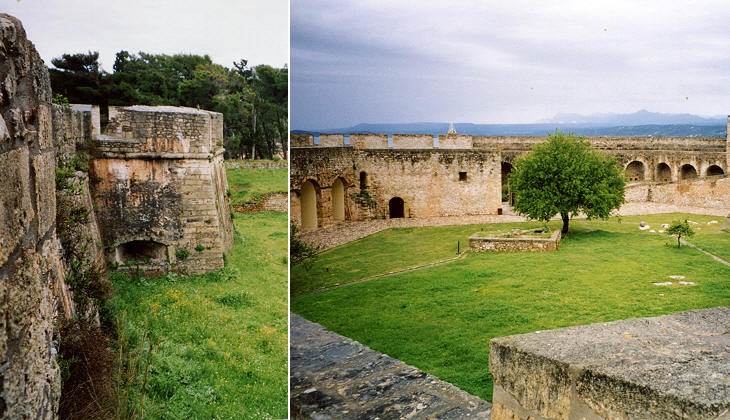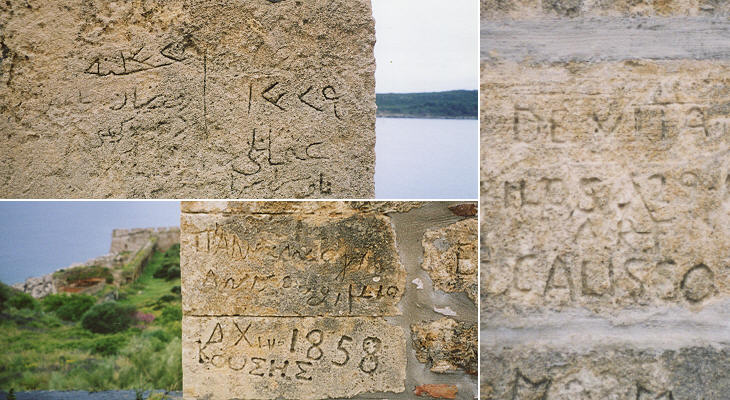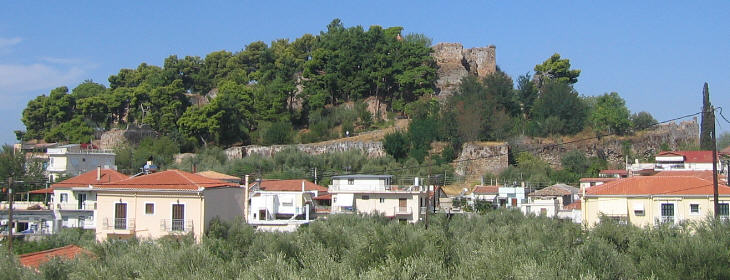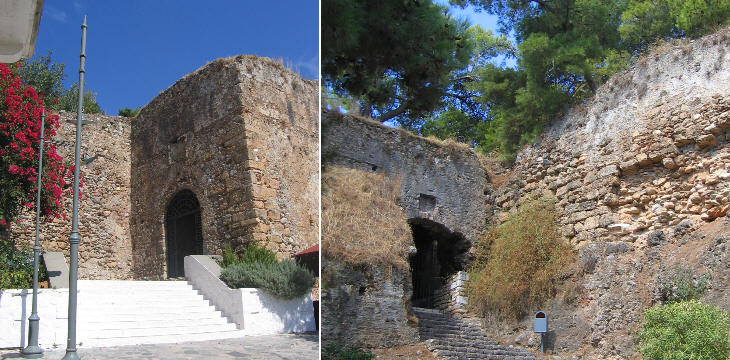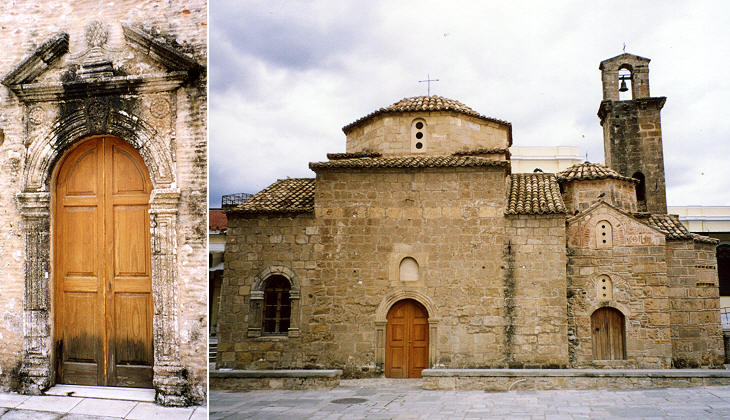  What's New! Detailed Sitemap All images © by Roberto Piperno, owner of the domain. Write to romapip@quipo.it. Text edited by Rosamie Moore. Page revised in November 2007. |
 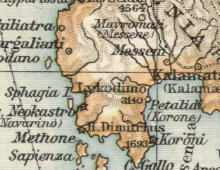 Navarino (Pilo) (and Calamata) Navarino (Pilo) (and Calamata)
Key dates: 1204 As a consequence of the fall of the Byzantine Empire Navarino is assigned to the Frankish Villehardouin family 1500 Sultan Bayazet II invades Peloponnese and conquers Navarino 1686 The Turkish garrisons of the fortresses of Navarino capitulate 1714 The Venetians abandon the fortresses of Navarino The current name of the town, Pilo (Pylus), is associated with the wise King Nestor who participated in the hunting of the Calydonian boar and in the Troy war. The name Navarino is famous for the naval battle which took place on October 20, 1827 between the combined fleets of the Great Powers (France, Britain and Russia) supporting the Greek fight for independence and the Egyptian fleet of Ibrahim Pasha called by the Sultan to help crush the insurgents. Another name by which its bay was known is il Zonchio a name given by the Venetian cartographers to a cape between Navarino and Modon.
The monument in the main square of Navarino is dedicated to the three admirals (de Rigny, Codrington and Geiden) who defeated Ibrahim Pasha and eventually forced him to leave the fortress in September 1828. The little monument is embellished by two cannons. One of them is Turkish: because one of the Great Powers lacked a cannon, the Greeks have placed a Venetian cannon on the other side, so that the two serve as a reminder of the role of artillery in the wars between the Turks and the Venetians. The 1453 fall of Constantinople had showed that the Turks had an immensely powerful artillery of a kind unknown in western Europe. Under Sultan Suleiman I the Magnificent the Turks were able to cast cannons at the battle-site. The Venetians reacted in the XVIth century by developing a significant metallurgical industry in the valleys near Bergamo and Brescia and this trade still survives.
The bay of Navarino, the largest natural harbour in the Peloponnese, is closed by a long and narrow island, Sphaktiria, parallel to the coast. At the northern entrance of the bay the Franks built on the site of the acropolis of ancient Pylus a fortress (Paleokastro), which lost its importance when the Turks in 1573, two years after the defeat of their fleet at Lepanto, built a new fortress (Neokastro) at the southern entrance of the bay.
Initially the Turks built two small bastions facing the sea where they placed their artillery. Later on they fortified the hill above the bastions with a citadel and built long walls linking the citadel to the bastions creating a very large state of the art fortress.
The walls protect a very large area. The mosque (which had a minaret), now a church, repeatedly changed its function, depending on who was master of the fortress (which, in addition to the Venetian occupation, in 1770 was briefly occupied by the Russians; in 1821 the insurgent Greeks seized it, but in 1825 Ibrahim Pasha re-occupied the fortress).
During their occupation (1686-1714) the Venetians strengthened the citadel by building five bastions and a large walk-way along the walls with a ramp to allow easy access to it. In 1714 however the Venetians preferred to abandon the fortress and to concentrate their troops in Modon.
Life in a fortress waiting for the enemy to arrive can be pretty boring and lead a man to believe his life is senseless. This feeling was shared by all the occupants of the fortress who felt the need to leave a sign of their existence by cutting their names on the walls of the fortress (the Italian name relates to the Italian occupation of the fortress during WWII). Calamata Key dates: 1204 As a consequence of the fall of the Byzantine Empire Calamata is assigned to the Frankish Villehardouin family 1500 Sultan Bayazet II invades Peloponnese and conquers Calamata 1685 The Turkish garrison of Calamata capitulates 1714 The Venetians abandon the fortress of Calamata
In 1986 Kalamata, a flourishing town renowned for its olives, was hit by a major earthquake which caused at least 120 deaths. The castle built by the Villehardouin in 1208 showed that the building techniques of the past were more reliable than the modern ones. The castle was used as a barracks until very recently.
The original castle was enlarged with the addition of a wall curtain on its southern side; although this section looks more solid it does not show major evidence of being upgraded to the needs of artillery warfare. The Venetians were not very interested in this mainly agricultural town and they just strengthened the gate tower of the outer ward and placed a winged lion on it. They did the same at the entrance to the inner ward.
At the foot of the hill some small churches also survived the earthquake, among them an old Byzantine church, Aghii Apostoli, very important in Greek history because it was one of the sites where the uprising of the Peloponnese was announced in March 1821. It was a tiny chapel (right part of the building) which was enlarged during the Venetian occupation (left part of the building and major dome).
Excerpts from Memorie Istoriografiche del Regno della Morea Riacquistato dall'armi della Sereniss. Repubblica di Venezia printed in Venice in 1692 and related to this page:
Introductory page on the Venetian Fortresses Pages of this section: On the Ionian Islands: Corfù (Kerkyra) Paxo (Paxi) Santa Maura (Lefkadas) Cefalonia (Kephallonia) Asso (Assos) Itaca (Ithaki) Zante (Zachintos) Cerigo (Kythera) On the mainland: Butrinto (Butrint) Parga Preveza and Azio (Aktion) Vonizza (Vonitsa) Lepanto (Nafpaktos) Atene (Athens) On Morea: Castel di Morea (Rio), Castel di Rumelia (Antirio) and Patrasso (Patra) Castel Tornese (Hlemoutsi) and Glarenza Navarino (Pilo) and Calamata Modon (Methoni) Corone (Koroni) Braccio di Maina, Zarnata, Passavà and Chielefà Mistrà Corinto (Korinthos) Argo (Argos) Napoli di Romania (Nafplio) Malvasia (Monemvassia) On the Aegean Sea: Negroponte (Chalki) Castelrosso (Karistos) Oreo Lemno (Limnos) Schiatto (Skiathos) Scopello (Skopelos) Alonisso Schiro (Skyros) Andro (Andros) Tino (Tinos) Micono (Mykonos) Siro (Syros) Egina (Aegina) Spezzia (Spetse) Paris (Paros) Antiparis (Andiparos) Nasso (Naxos) Serifo (Serifos) Sifno (Syphnos) Milo (Milos) Argentiera (Kimolos) Santorino (Thira) Folegandro (Folegandros) Stampalia (Astipalea) Candia (Kriti) You may refresh your knowledge of the history of Venice in the Levant by reading an abstract from the History of Venice by Thomas Salmon, published in 1754. The Italian text is accompanied by an English summary. Clickable Map of the Ionian and Aegean Seas with links to the Venetian fortresses and to other locations (opens in a separate window) |
